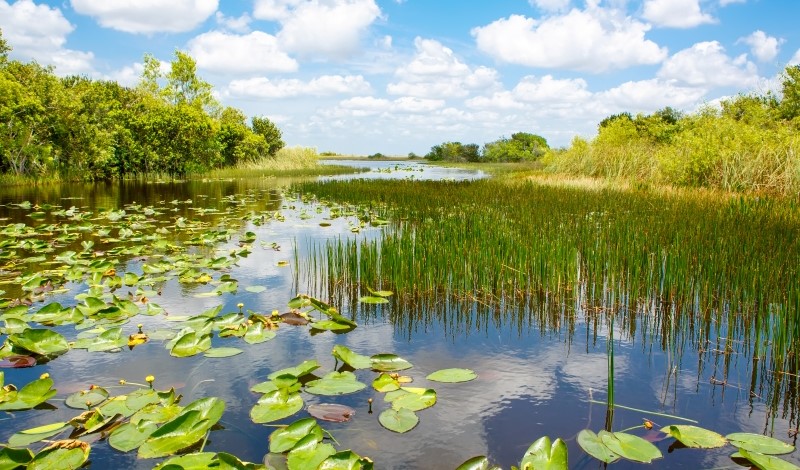
As traditional revenue sources decline, state wildlife agencies are on the hunt for new funding solutions.
State wildlife agencies are responsible for managing over 450 million acres of land in the United States—an area roughly the size of Mexico.
These agencies rely on revenue from hunting and fishing activities to fund their budget and enable their conservation work. But with each passing year, the number of hunters and fishers in the United States continues to decline. And as hunters disappear, so does revenue from their purchases.
“Alarm bells are going off at agencies all across the country,” Lincoln Larson, a professor of parks and recreation management, reportedly said. Wildlife agencies are now searching for alternative ways to fill their widening funding gaps.
In the United States, very few state wildlife agencies receive steady, or even one-time, appropriations from their state legislatures. Instead, they rely on two main funding streams.
First, they earn revenue from the licenses that hunters must buy in order to hunt or fish in the state.
Second, they receive federal funding in proportion to their geographic size and hunting population. That funding is derived from federal excise taxes on hunting and fishing gear.
Together, these funding sources comprise about 80 percent of state wildlife agencies’ revenue.
But the relative population of hunters in the United States has declined since the 1960s. As of 2016, less than 5 percent of the U.S. population hunts, which is roughly half of what it was fifty years ago. And although there was a bump in hunting engagement during the COVID-19 pandemic, demand has now returned to pre-pandemic numbers.
A dwindling hunter population is not the only challenge that wildlife agencies face.
State conservation areas have a free rider problem as well. Many people visit these outdoor areas and do not use them for hunting—rather, they go to hike, camp, birdwatch, or mountain bike. These “wildlife watchers” are not subject to the same equipment or licensing fees, and as a result, they are enjoying nature without paying to conserve it in the way that hunters and anglers must, scholars argue.
Environmentalists argue that the hunter-centric approach to funding leads to an overemphasis on game species. Although 98 percent of wildlife are species that are not hunted or fished, only about 10 percent of conservation spending is dedicated to those species.
“I used to joke that we ought to be part of the Agriculture Department,” a former member of Washington’s wildlife agency reportedly said. “What we do is produce animals for harvest.”
Washington recently signaled an interest in departing from this traditional “hook and bullet” approach. Over the next several years, the state will funnel tens of millions of dollars into conservation efforts specifically for non-game species, such as foxes, butterflies, and frogs.
Other experts find that the primacy of guns in funding conservation is morally wrong. Gun sales are on the rise, which has partially offset the stress of the declining hunter population. But it also means that individuals use guns and ammunition for non-hunting purposes, including mass shootings and hate crimes. Scholars argue that conservation efforts, therefore, are funded by and “benefiting from the fear, racism, and sustained social conflict that drive gun sales.”
Solutions to these issues are as varied as the species needing protection.
If passed, the federal Recovering America’s Wildlife Act would provide over a billion dollars to state wildlife conservation efforts. Proponents have celebrated the bill as “the most important wildlife conservation legislation in half a century,” and it has received bipartisan support in both chambers.
But the bill has had a turbulent political history.
It nearly passed in 2022, but after a clash over the funding mechanism, the U.S. Senate cut it from the budget at the last minute. Two senators reintroduced the bill in March of 2023, and it is still under consideration.
Another solution could be a so-called “backpack tax,” which would apply to outdoor goods not used for hunting or fishing alone, such as hiking boots, tents, and backpacks. Proponents argue that this tax would stop hunters and anglers from paying “more than their share” for conservation funding and would spread the burden to the other users of outdoor areas.
The backpack tax has faced stiff opposition from industry, including major retailers such as REI, and failed to pass in the 1990s. In addition, research suggests that young people are least supportive of this tax compared to other funding solutions. But Georgia, Texas, and Virginia have already passed versions of the tax—on hiking, camping, and water sports gear—to fund conservation.
Some commenters argue that federal and state governments should place more severance taxes dedicated to conservation on consumptive natural resources industries, such as gas, coal, and natural gas companies. For example, half of the revenue from Colorado’s severance tax goes to its natural resources department for water conservation and resource planning.
But other environmentalists worry that this structure is nothing more than a “green veneer on drilling and mining.” Oil companies pay a portion of money for a “little park,” and “in the meantime you get a Deepwater Horizon oil spill,” Andy Stahl, the director of Forest Service Employees for Environmental Ethics, reportedly said.
Other stakeholders suggest taking a cut of federal funds from existing sources. For example, federal and state governments could reserve a portion of the highway gas tax from snowmobiles, all-terrain vehicles, and other outdoors equipment for wildlife restoration.
Or state lottery funds could be put toward wildlife restoration, such as in Colorado and Oregon. Opponents, however, criticize this approach for associating conservation with regressive funds that exploit low-income individuals who are unlikely to have the time or money to enjoy state parks.
Ultimately, few observers doubt that the century-old system for wildlife agency funding is becoming “inadequate to support future fish and wildlife conservation.” But the question yet remains which path will lead these agencies out of the woods.



